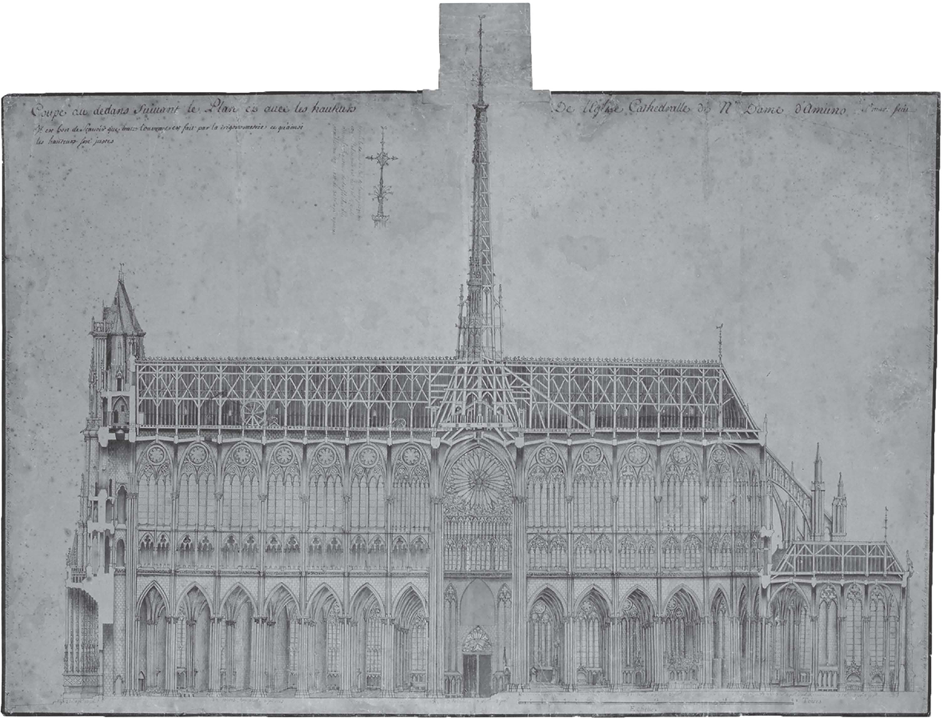Table of Contents
Notre-Dame of Amiens
Notre-Dame of Amiens
LIFE OF THE GOTHIC CATHEDRAL
Stephen Murray
Columbia University Press

New York
Columbia University Press
Publishers Since 1893
New York Chichester, West Sussex
cup.columbia.edu
Copyright 2021 Columbia University Press
All rights reserved
All photographs are by the author unless otherwise indicated
E-ISBN 978-0-231-55147-2
Library of Congress Cataloging-in-Publication Data
Names: Murray, Stephen, author.
Title: Notre-Dame of Amiens: life of the Gothic cathedral / Stephen Murray.
Description: New York: Columbia University Press, [2020] | Includes bibliographical references and index.
Identifiers: LCCN 2019056078 (print) | LCCN 2019056079 (ebook) | ISBN 9780231195768 (cloth) | ISBN 9780231551472 (ebook)
Subjects: LCSH: Cathdrale d'Amiens. | Architecture, GothicFranceAmiens. | Architecture and societyFranceAmiensHistory. | Amiens (France)Buildings, structures, etc.
Classification: LCC NA5551.A45 M873 2020 (print) | LCC NA5551.A45 (ebook) | DDC 720.944/2625dc23
LC record available at https://lccn.loc.gov/2019056078
LC ebook record available at https://lccn.loc.gov/2019056079
A Columbia University Press E-book.
CUP would be pleased to hear about your reading experience with this e-book at .
Cover design: Milenda Nan Ok Lee
Cover credit: Upper chevet, hemicycle, seen from the east: the work of Master Mason Renaud de Cormont, c. 1260 1270. Stephen Murray, photographer.
All men naturally desire knowledge. Wherefore God, who so loves man that He wants to provide for his every need, has given him a particular faculty of mind called Memory. This Memory has two doors: Sight and Hearing. And to each of these two doors a pathway leads, namely Depiction and Description. Depiction serves the eye and Description serves the ear. Memory renders the past as if it were present.
RICHARD DE FOURNIVAL, CHANCELLOR OF AMIENS CATHEDRAL, C. 1250
The Mother of God, Saint Mary of Amiens, is your lady of all ladies. She is the lady of the world, she is the queen of the glorious heavens, she is the treasure of sinners, she is the savior of souls, she is the spouse of our Lord, she is the mother of Jesus Christ, she is the temple of the Holy Spirit.
WORDS OF AN ANONYMOUS PREACHER, C. 1270
Plan Saint Marc, Longitudinal Section. Collections du Muse de Picardie, Amiens, Anonyme, France, vers 1727, Coupe longitudinale de la Cathdrale dAmiens, plume sur papier, collection du Muse de Picardie, Amiens, no inv.: M.P.2072-32, photo Ludovic Leleu/Muse de Picardie.
Contents
A S I LOOK BACK at a half-century of engagement with Amiens, my feelings of gratitude and admiration are obviously directed principally toward the cathedral of Notre-Dame herself, whose beauty and perfection never fail to inspire, yet whose very imperfections encourage us to tease out the stories of builders and users.
And then, I want to remember the many people with whom I learned to look at the cathedral, starting with my teacher, Peter Kidson, and the participants in a memorable Easter field trip in snowy weather organized by the Courtauld Institute in 1969. My first serious archaeological work at Amiens began in 1978 when, accompanied by my family, I began to prepare measured drawings in order to make comparisons with Beauvais Cathedral, the subject of my 1989 book. Thanks to Grainne, Pippa, and Finnian for their patience, support and inspiration.
In 198788 I was able to spend months engaged in intense archaeological and archive work in Amiens: thanks to the Guggenheim Foundation; to Jean-Yves Le Corre, conservator at the Direction rgionale des affaires culturelles; and to James Addiss, with whom I measured out the cathedral plan.
Through the 1990s I continued to return to the cathedral, often in the company of my National Endowment for the Humanities summer seminar participants whose curiosity and enthusiasm were contagious. In 1993, under the tenure of grants from the NEH and the Andrew Mellon Foundation, I established the Media Center for Art History at Columbia University with the objective of exploiting the new digital media in the teaching of the Columbia Core Curriculum, where Amiens Cathedral represents the thousand years of artistic production of the Middle Ages. I am grateful to all those who helped launch this enterprise, particularly to Maurice Luker and Vice Provost Michael Crow. Our digital Amiens Project was featured in the Seventieth Columbia University Lecture (1995) and attracted the attention of Xavier Bailly, director of patrimony at Amiens, who in 1998 graciously awarded me honorary citizenship. I also want to thank Didier Groux and Christopher Weeks, who allowed me access to their important work of restoration on the portals in the 1990s, and to Maurice Duvanel, who introduced me to the community of the compagnons de devoir.
Having spent a decade engaged in digital mapping of Romanesque and Gothic churches, I found myself drawn back to Amiens in 2014 with a new project leading to the website and this book. For the website work I am infinitely grateful to Emogene Cataldo, Tori Schmitt, Stefaan van Liefferinge, Tim Trombley, Gabriel Rodriguez, and Myles Zhang. Susan Boynton, Frdric Billiet, and Benjamin Bagby worked with me to add the musical dimension to the project. Lisa and Bernard Selz have taken a keen interest in my work and graciously joined me in a memorable visit to the Amiens choir stalls in 2015.
In this last phase of work in Amiens I have been helped by innumerable colleagues and friends: Professors tienne Hamon and El Mustapha Mouaddib; Emeline Lefbvre, Thierry Sanchez, and the team of cathedral guides; Christian Sutcliffe; Louis Mouton; Nicolas Asseray; Aurlien Andr, keeper of the diocesan archives; Don Edouard Courlet de Vregille, rector of the cathedral, as well as the ever-welcoming team at Le Prieur, which provided delightful accommodation. I have relied throughout upon the unfailing support and advice of Rory ONeill, Robert Harrist, Michael Davis, Robert Bork, Matthew Reeve, Annie Mouton-James and Adeline Ducasse. And I want to thank the director and editors of Columbia University Press, who have been generous with their guidance and support.
I am deeply grateful to the University of Picardy, Jules Verne, and to President Mohammed Benlahsen, for the award of an honorary doctorate in December 2019the culmination of my professional careerand to my colleague and friend Arnaud Timbert for his sponsorship.
May I offer this, my final book, to the people of Amiens?
Aux Aminois!
S TUDENTS AND LOVERS of the great French Gothic cathedralsLaon, Notre-Dame of Paris, Soissons, Chartres, Bourges, Reims, Beauvais, and Amienshave, for centuries, asked themselves: Which is the most beautiful of them all? For many, that distinction goes to Amiens. But how should we tell the story of this overwhelming masterpiece that appears to link human creativity with the Divine? How can we hope to create a written structure to match the cathedral? Our book must recount the stories of a long-vanished pastwhile at the same time embracing the continuing physical presence of the cathedral in our own time and space, still inviting us to approach, to enter, and to marvel.

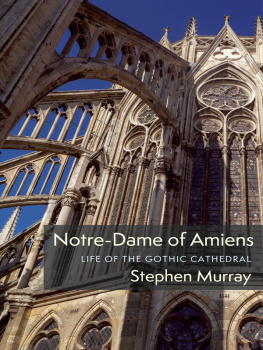


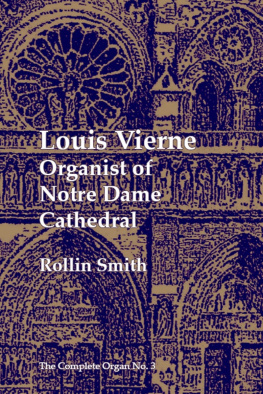
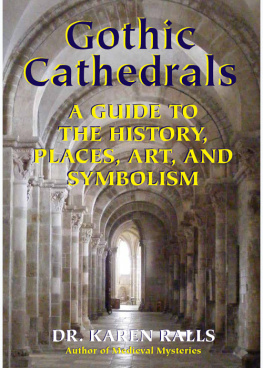

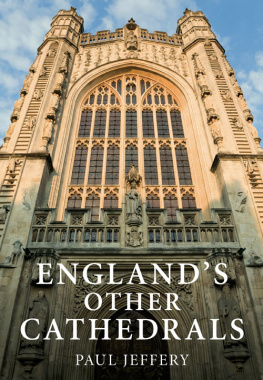

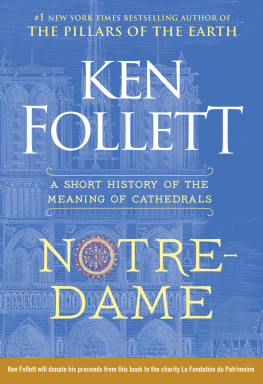
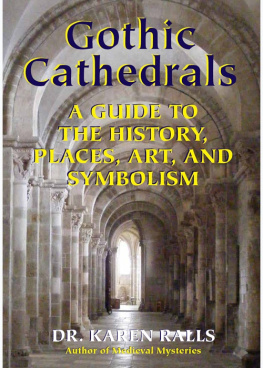

 New York
New York